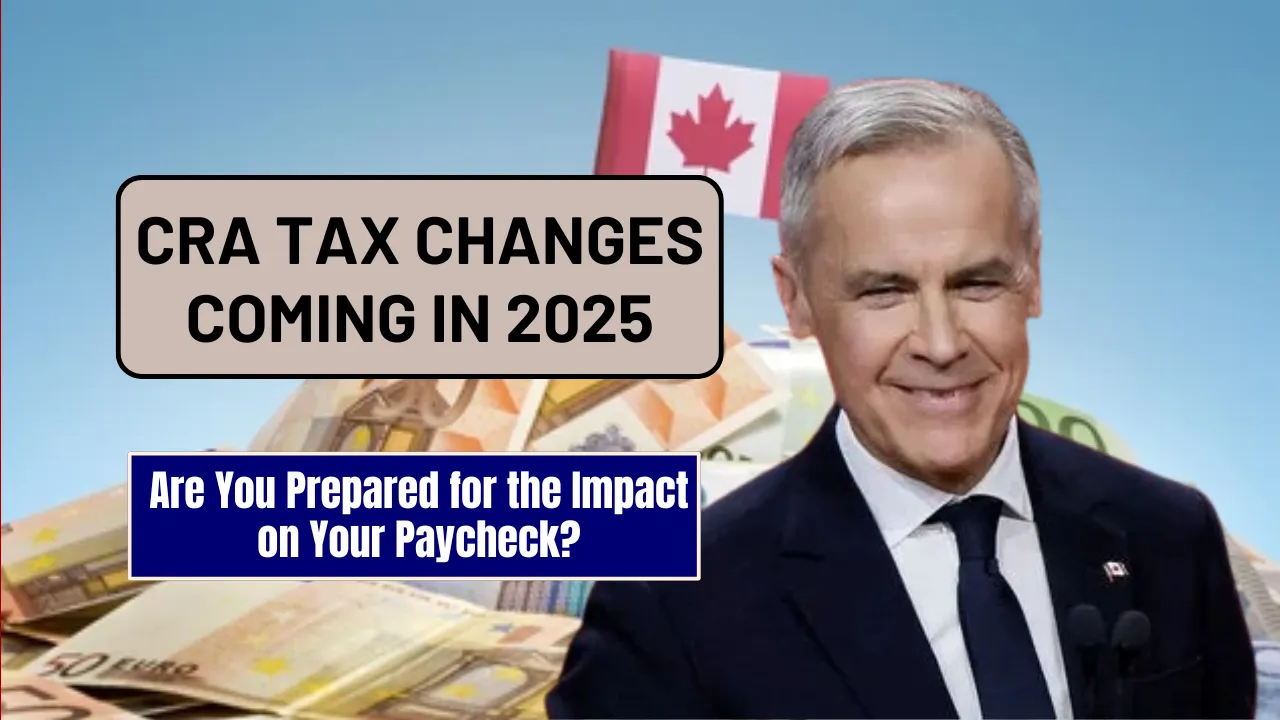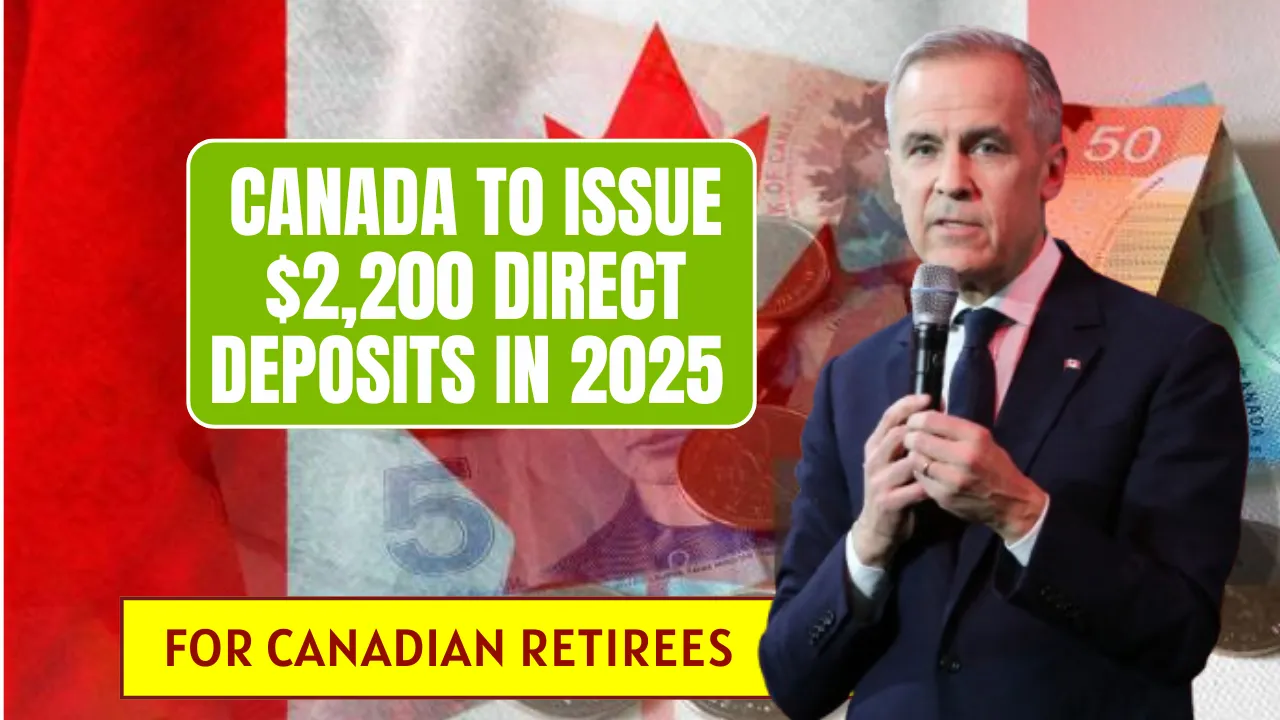CRA Tax Changes 2025: As 2025 unfolds, the Canada Revenue Agency is introducing several tax changes that are expected to affect a wide range of Canadians. Whether you’re employed, self-employed, or retired, these adjustments could alter your take-home pay and overall financial planning. From revised tax brackets to changes in pension contributions and future capital gains rules, it’s important to understand how these shifts might impact you.
The CRA Tax Changes 2025 go beyond routine updates. With inflationary adjustments to tax brackets, the introduction of a second CPP contribution tier, and an upcoming increase in capital gains tax, Canadians need to reassess how they save, invest, and plan for retirement. Whether you’re earning a modest salary or managing business income, these updates could influence your next paycheck and your long-term financial outlook.
CRA Tax Changes 2025
The CRA Tax Changes 2025 reflect a broader effort by the federal government to modernize tax policies while addressing inflation and retirement planning. These updates not only shift how much tax you pay but also influence how you contribute to pensions and manage investment gains. Understanding each component—from updated tax brackets to new CPP thresholds—can help workers, retirees, and small business owners better navigate their financial responsibilities and maximize their savings in the year ahead.
CRA Tax Changes 2025 – Overview Table
| Category | Key Changes |
| Federal Tax Brackets | Increased by 2.7% for inflation |
| Basic Personal Amount | Raised to $16,129; phased out at higher incomes |
| CPP Contributions | New tier for $71,300–$81,200 income; extra 4% (8% self-employed) |
| Capital Gains Inclusion | Increase to 66.67% on large gains, starting June 1, 2026 |
| Provincial Tax Updates | Manitoba, Nova Scotia, PEI updating BPA and indexation |
Federal Income Tax Updates
To account for inflation, the federal government has adjusted income tax brackets upward by 2.7%. This aims to prevent bracket creep, where increased wages push taxpayers into a higher bracket despite no real gain in purchasing power. In 2025, the federal rates range from 15% on incomes up to $57,375 to a top rate of 33% for those earning above $253,414.
In addition, the Basic Personal Amount (BPA) has increased to $16,129. This is the income you can earn tax-free. However, for higher earners, this amount is gradually reduced to as low as $14,538, meaning the benefit of the BPA becomes smaller as your income rises.
CPP Contributions Expanding in 2025
A significant change in 2025 is the expansion of CPP contributions. The CRA has introduced a second tier of pensionable earnings. The standard contribution applies to income up to $71,300. But if you earn between $71,300 and $81,200, you’ll now contribute an additional 4% on that portion. If you’re self-employed, you’ll be contributing 8% on that upper range since you’re responsible for both employee and employer portions.
This update is designed to strengthen retirement security for middle and high-income Canadians. Although it means slightly more deductions from paychecks now, it will also translate into higher CPP benefits upon retirement.
Provincial Tax Adjustments
Some provinces are also adjusting their tax structures. In Manitoba, the Basic Personal Amount will now be reduced for those earning over $200,000 and will be fully eliminated once income surpasses $400,000. This effectively raises taxes for top earners in the province.
Nova Scotia has decided to index its tax brackets and credits to inflation. This move helps residents avoid unintentional tax increases when their wages rise slightly. Prince Edward Island has also made similar updates, increasing its BPA to $14,250 and adjusting brackets to ease cost-of-living pressures for residents.
Capital Gains Inclusion Rate Increasing in 2026
While most of the 2025 changes are immediate, one major shift is scheduled for June 1, 2026, and it’s already causing concern among investors and business owners. The capital gains inclusion rate will rise from 50% to 66.67% for individuals with over $250,000 in gains and for all capital gains realized by corporations and most trusts.
This change means a greater portion of your investment profits will be taxable. For example, if an individual earns $300,000 in capital gains in a year, only the first $250,000 will be taxed at the 50% rate, and the remaining $50,000 will be taxed at the new higher inclusion rate. For corporations and trusts, the full amount will be subject to the 66.67% inclusion rate, regardless of the gain size.
What You Should Do Now
These tax changes might seem technical, but they have very practical effects on your financial life. If you’re employed, take a moment to review your latest pay stub. You may already notice increased CPP deductions and slightly adjusted tax withholdings.
For self-employed individuals or those managing payroll, it’s crucial to update payroll software and ensure that calculations reflect both the new tax brackets and CPP contribution rates. Using the CRA’s Payroll Deductions Online Calculator can help you determine the correct deductions.
If you’re planning to sell assets in 2026, it might be worth speaking to a tax advisor now. You may benefit from selling certain investments before June 1, 2026, or spreading the gains across multiple years to stay below the $250,000 threshold and reduce your tax exposure.
It’s also a good time to review your retirement savings strategy. With CPP expanding, you might want to reassess how much you’re putting into RRSPs and TFSAs. Adjusting your contributions could help you optimize for both tax savings now and income in retirement.
FAQs
What is the new top federal tax rate in 2025?
It remains at 33% for incomes over $253,414, but the brackets have been adjusted for inflation.
When do the CPP changes come into effect?
They begin in January 2025, with deductions already visible by mid-year.
What is YAMPE in CPP?
The Year’s Additional Maximum Pensionable Earnings is the upper limit ($81,200) for the new second tier of CPP contributions.
Who will pay the higher capital gains tax rate?
Individuals with gains over $250,000 annually, and all corporations and most trusts, starting in mid-2026.
Can I lower my capital gains tax burden?
Yes, by using registered accounts like RRSPs or TFSAs, or spreading gains across multiple years.
Final Thought
The CRA Tax Changes 2025 are some of the most wide-reaching updates in recent years. From higher CPP contributions to adjustments in income brackets and the impending capital gains inclusion rate hike, Canadians need to pay attention. Whether you’re planning for retirement, managing payroll, or simply reviewing your investments, now is the time to act.
Stay informed, update your financial tools, and consult professionals if needed—these changes may be manageable now, but ignoring them could mean costly surprises down the line.












